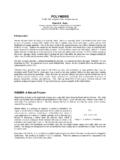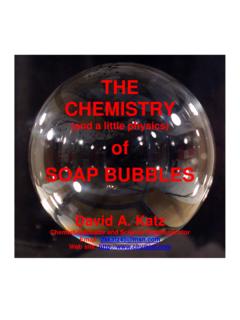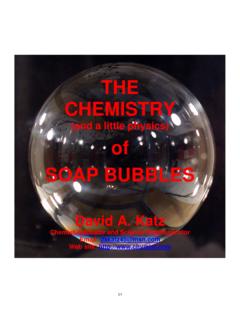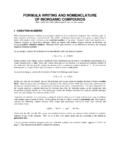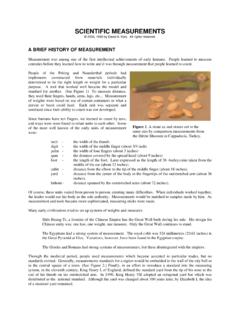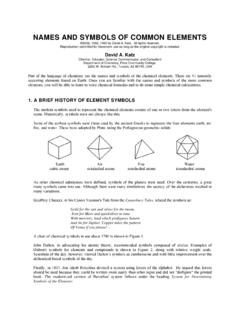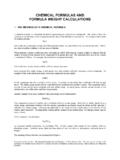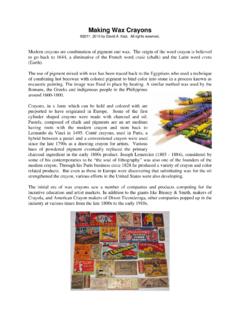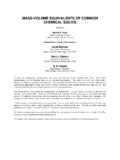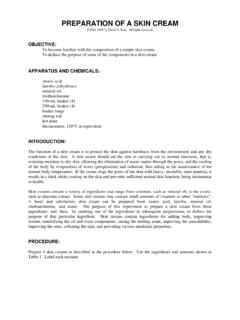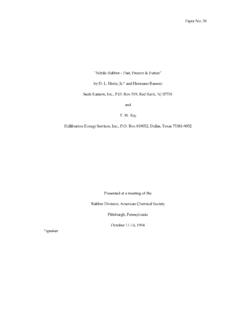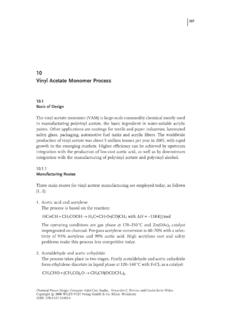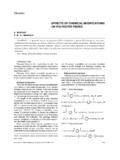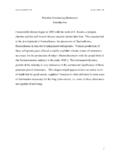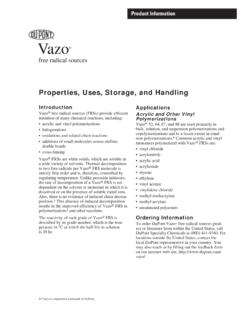Transcription of Kinetic Sand - chymist.com
1 Kinetic sand 2014 by David A. Katz. All rights reserved Kinetic sand is a dilatant material made from an ultrafine sand and polydimethylsiloxane (also called dimethicone) and marketed by Waba Fun, LLC. A dilatant material is a non-Newtonian fluid in which its viscosity increases under stress. Another dilatant material can be made from cornstarch and water (sometimes called Oobleck). The properties of Kinetic sand allows it to be shaped into pyramids or other simple shapes and to be cut into shapes with cookie cutters or molds. Kinetic sand can also be sliced into pieces using a knife. Over a time of a few minutes, or if disturbed, the shapes will collapse.
2 Kinetic sand molded with cookie cutters Kinetic sand , cut into slices with a knife According to the company literature, Kinetic sand consists of 98% sand and 2%. polydimethylsiloxane. Safety There are no listed hazards for dimethicone. Disposal and Clean-up Dimethicone is not biodegradable. Dispose of Kinetic sand and dimethicone in the trash. Always work with Kinetic sand , especially home-made Kinetic sand , in some kind of a tray to contain the material for clean-up purposes. How to make Kinetic sand Materials Super fine sand (I purchased the finest sand I could find at a garden center. This is the type of sand used in small globes or decorative containers.)
3 It comes in 5 pound bags. Do not purchase colored sand , the coloring material may not work for this procedure. Play sand , available at hardware and toy stores is too coarse for this procedure.). Dimethicone (polydimethylsiloxane), CH3[Si(CH3)2O]nSi(CH3)3, where n is the number of repeating monomer [SiO(CH3)2] units. Available from a cosmetics supply company. Dimethicone is manufactured in various viscosities. Dimethicone 500 was used in this procedure. Small pan, such as an aluminum foil cake or pie pan. Small container for mixing the Kinetic sand Stirring rod, popsicle stick, or plastic spoon Procedure Dry the sand in an oven at 250 F (120 C) for several hours or overnight.
4 Let the sand cool to room temperature. Weigh 100 g of sand in a small container (or use multiples of 100 g). Add 2 g of dimethicone. Stir well. If the dimethicone is not sufficient to coat the sand , add another 2 g of the dimethicone and stir well. You may have to add additional amounts of dimethicone, in 2 g quantities, until the sand will stick together like the commercial Kinetic sand . Avoid a large excess of the dimethicone. (The fine sand used for this procedure required 10 g of dimethicone.). The home-made Kinetic sand will not behave exactly like the commercial material due to the larger grain size of your sand as compared to that used by Waba Fun, LLC.
